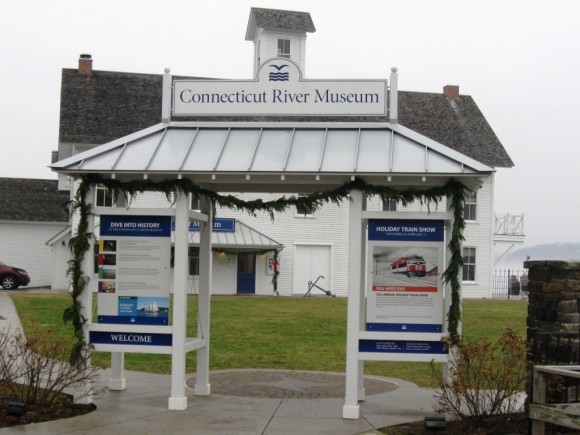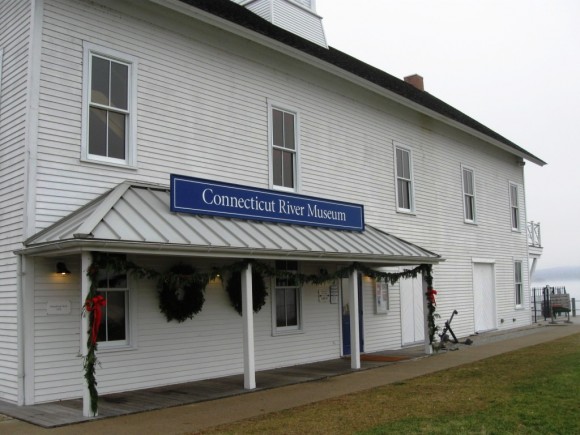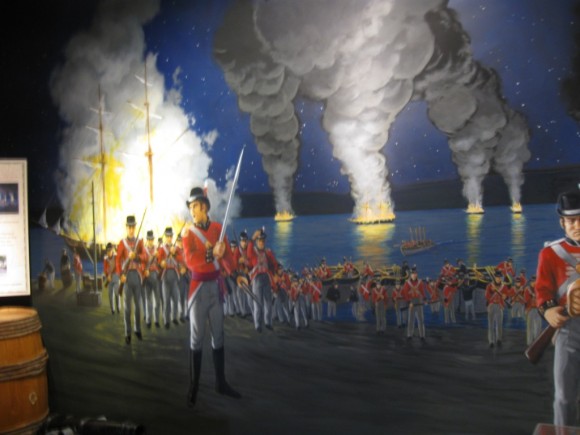
Imagine if you will, a vintage, side-wheeler steamboat tied up smartly at the Steamboat Dock of the Connecticut River Museum. Imagine as well that, on given days, this old, classic steamboat carries modern day passengers up and down the Connecticut River on both educational and pleasure cruises.
This is just one of the ambitious dreams held by the Connecticut River Museum’s new Executive Director, Christopher I. Dobbs (he prefers to be called “Chris.”) Dobbs recently replaced the museum’s former Executive Director, Jerry Roberts.
A resident of Deep River, the 42-year-old Dobbs comes to his new post at the Connecticut River Museum after a nine year stint as Executive Director of the Noah Webster House & West Hartford Historical Society in West Hartford. Prior to that, he was the Associate Director of Education at the Mystic Seaport Museum of America and the Sea. Dobbs has an M.A. in Museum Studies from the State University College of New York, Cooperstown, N.Y.
To help him secure the Connecticut River Museum’s top job, Dobbs submitted to the search committee an impressive, three-paged, single-spaced, small-type resume, setting forth his previous experience and multiple accomplishments in the museum field. For example, his resume notes that as head of the Noah Webster House & West Hartford Historical Society, he “Developed and completed a $1.2 million capital campaign (raised 20% more than goal.)”
Also, noted is that in his previous position he, “Acted as the chief fundraiser by working with individual donors, foundations, city government, and State of Connecticut legislatures and agencies, and that he, “Increased endowment 45 per cent.”
 “Conversational” billboard entrance to the Museum
“Conversational” billboard entrance to the MuseumIt is highly likely that the new Executive Director’s fundraising skills did not go unnoticed by the Connecticut River Museum’s search committee for a new Executive Director. Further evidence of Dobbs’s successful fund raising was that he managed and fundraised for a 250th Birthday celebration for his previous employer’s namesake, Noah Webster.
The Dream of a Steamboat Tied Up at Steamboat Dock
In a recent interview, Dobbs demonstrated that he is a person who can dream big. For example, he suggested that, at some future date, the Connecticut River Museum might acquire a fully working, side-paddling steamboat. With this historical coincidence in mind, the new steamboat would be docked at the Steamboat Dock of the Connecticut River Museum. In the 19th century, the Steamboat Dock was a frequent stop for steamboats operating along the river.
As for the present availability of old steamboats, Dobbs said, “There are some of them still around for sale.” Dobbs asks what could be more appropriate than to have a working steamboat tied up at the Steamboat Dock of the Connecticut River Museum.
This does not mean that the museum’s present sailboat, the “Mary E,” which seasonably carries paying passengers on short cruises up and down the Connecticut River, would be replaced immediately. However, the new Executive Director feels that having a working steamboat at the Steamboat Dock would be uniquely consistent with the Connecticut River Museum’s mission and history.
 The unadorned entrance of the Connecticut River Museum.
The unadorned entrance of the Connecticut River Museum.This talk of steamboats does not mean that Dobbs is not completely on board in commemorating next year’s 200th anniversary of the 2014 burning of the American ships in Essex by British forces during the war of 1812. However, Dobbs clearly feels that this one-time historic event should not be the principal focus of the Connecticut River Museum.
Tying the Museum to the Entire Connecticut River
Rather, the central mission of the museum, in Dobbs’s view, is that it should focus on the full length of the Connecticut River. As Dobbs puts it, “This is, after all, the Connecticut River Museum, and, therefore, the entire length of the river from the Canadian border down to the river’s mouth on Long Island Sound is what this museum should be all about.” It should be noted that the Connecticut River is 407 miles long and begins just below the Canadian border and runs down to its mouth on Long Island Sound in Connecticut between Old Saybrook and Old Lyme.
 Artist rendering at the Museum of 1814 British attack on Essex
Artist rendering at the Museum of 1814 British attack on EssexActivities that the museum might sponsor could be canoe excursions on the upper Connecticut River between Vermont and New Hampshire. In addition, the new Executive Director envisions joining the fight against pollution in the Connecticut River, as well as children’s programs about animal and aquatic life along the Connecticut River, including teaching young and old how “to hold a fish and touch a crab.”
Dodd also raptures that the Connecticut River is, “America’s First Blue Way.” Also, like many environmentalists, he is grateful that the mouth of the Connecticut River between Old Saybrook and Old Lyme “has not been spoiled by development.”
In sum, Chris Dobbs, the new Executive Director of the Connecticut River Museum, takes a broad and exciting view of his new position. He states conclusively, “We are the Connecticut River Museum, and that is the Connecticut River, and that is what we are about.” He continues, “That means that the museum is entwined with the river, every single mile of it.”